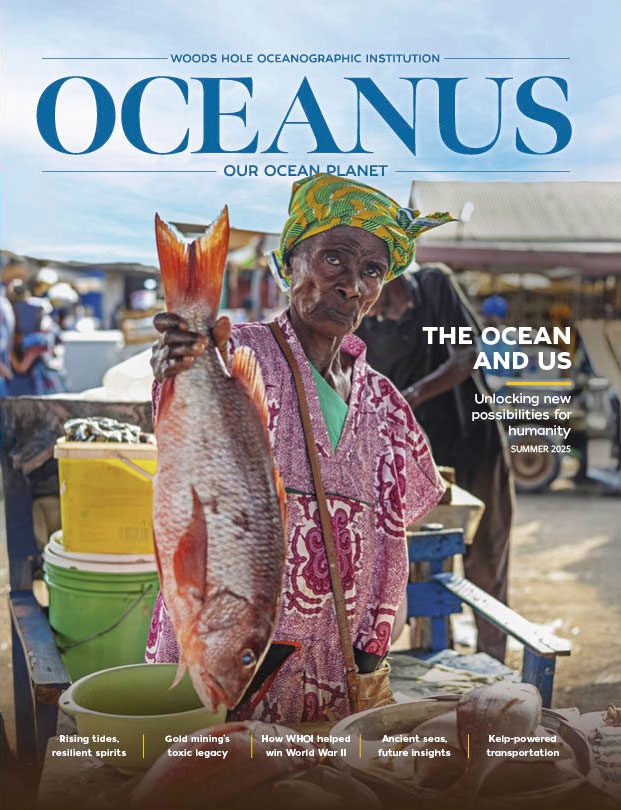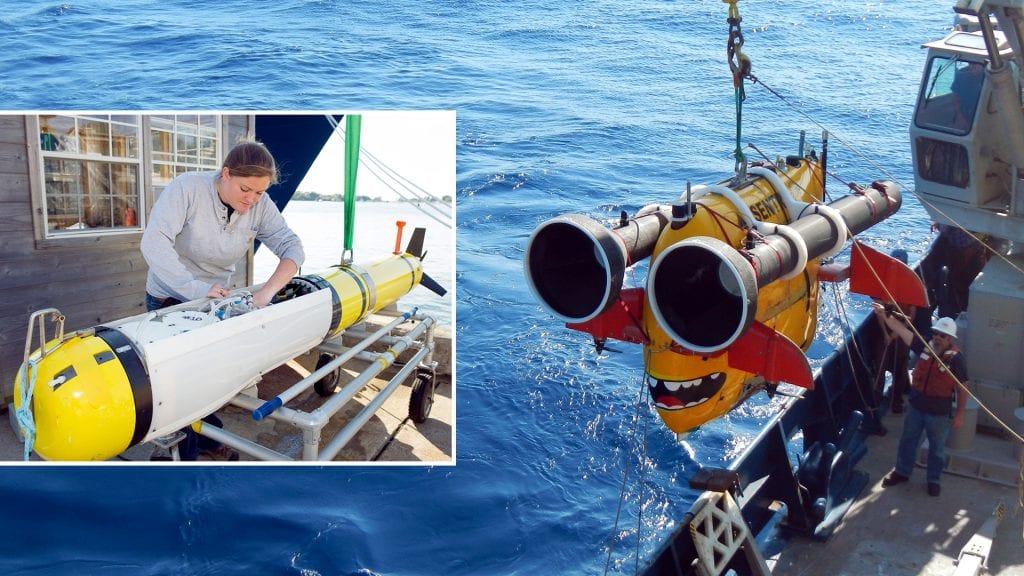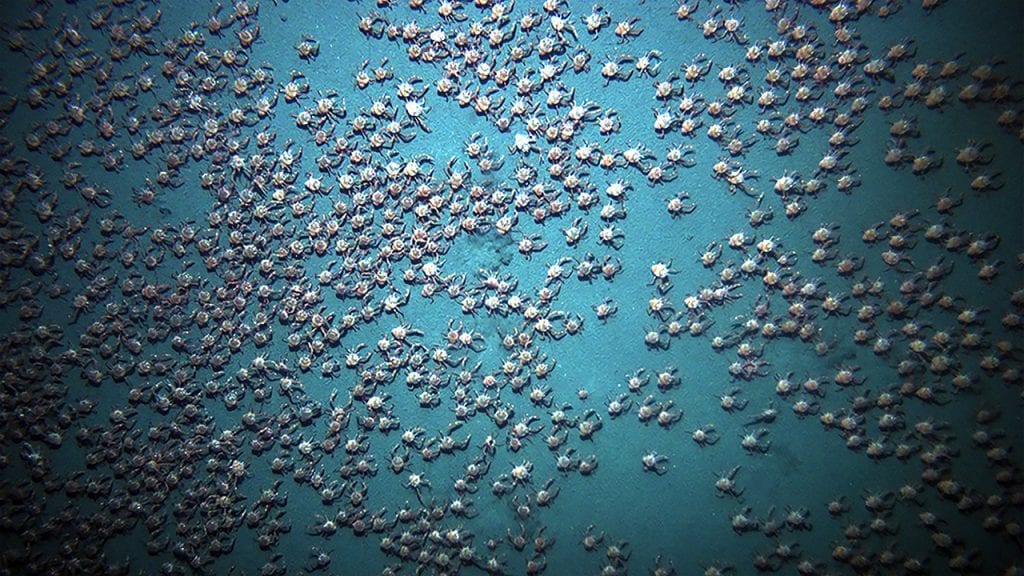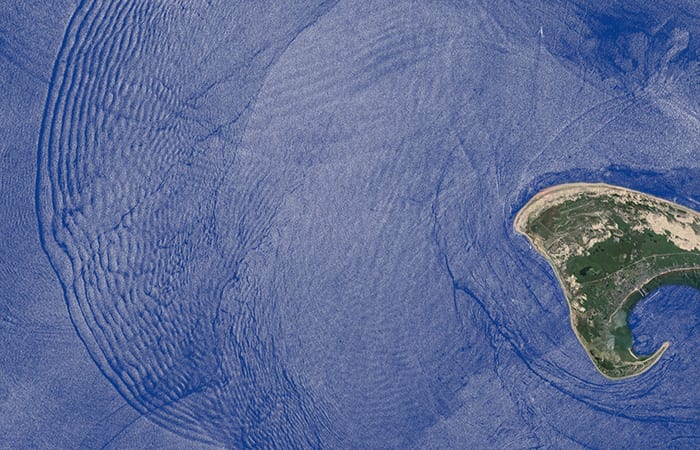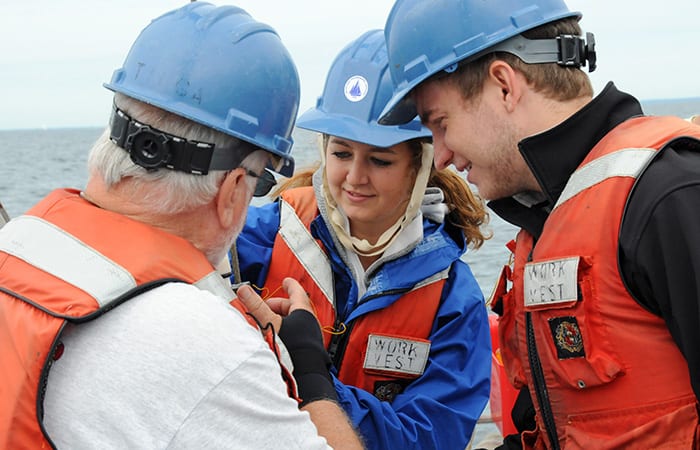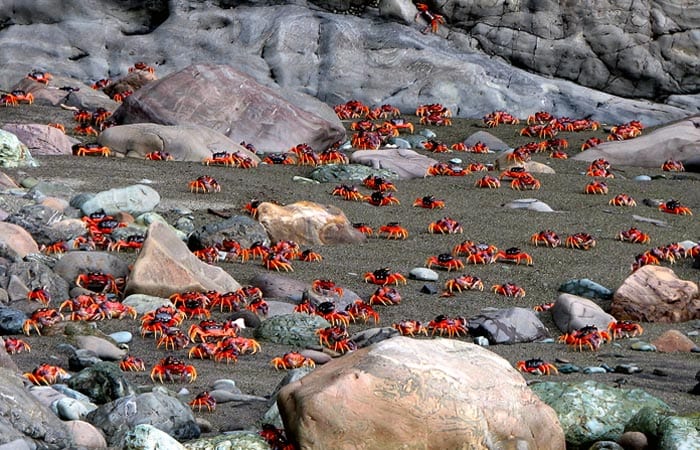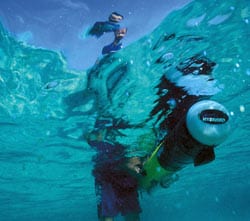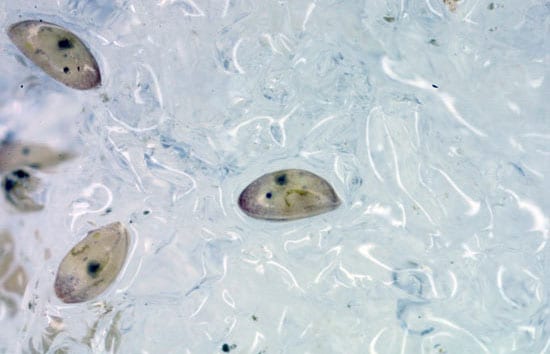Jesus Pineda
Refine by
Date
Topic:
Article Type
Special Series
Author
PlankZooka & SUPR-REMUS
Much of marine life begins as microscopic larvae—so tiny, delicate, and scattered in hard-to-reach parts of ocean that scientists have had a tough time illuminating this fundamental stage of life in the ocean. To see…
Crabs Swarm on the Seafloor
Expeditions to the tropics and Antarctica have turned up crab populations—for better or worse—in unexpected parts of the globe. At the Hannibal Bank Seamount, an 1,180-foot-high undersea mountain off Panana’s Pacific, a 2015 expedition led…
The Waves Within the Waves
If the 30-foot wave we were looking for had tumbled across the ocean’s surface that July day, it might have been mistaken for a monstrous rogue wave. But that’s not where this wave rolled. This…
A Summer of Science by the Sea, 2014 (Part II)
Every summer since 1959, undergraduates from around the world have come to Woods Hole Oceanographic Institution for a program to learn about ocean science and conduct research under the guidance of WHOI scientists. Read the second and final installment of our series of profiles of this year’s young scholars.
A Torrent of Crabs Running to the Sea
Joanna Gyory’s Ph.D. plans changed completely when she saw the crabs. It was her third or fourth day at the Liquid Jungle Lab, a research facility on an undeveloped island off Panama’s Pacific coast. After…
Cold Comfort for Barnacles
A WHOI research team reports that barnacle larvae can remain frozen up to seven weeks and still revive, settle, and grow to reproduce. The discovery offers a new understanding of barnacle larvae, which are abundant sources of food for larger animals in the coastal ocean. It also provides possible clues to how other intertidal marine invertebrates may settle and survive harsh winters.
